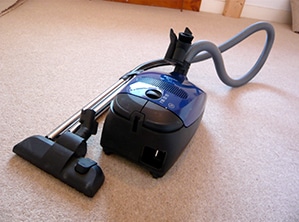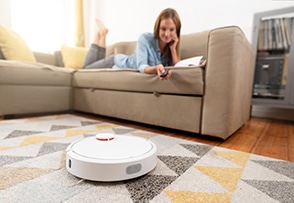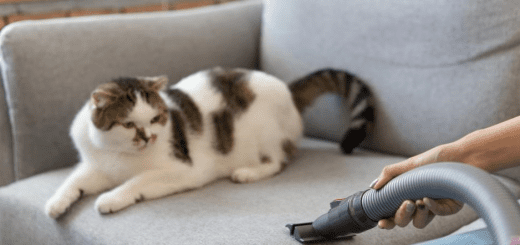How to Choose a Vacuum That’s Great for Cleaning Carpets
There are many types of vacuums on the market, ranging from cheap handheld models to cordless vacuums costing $500 or more. Spending more money doesn’t always translate to a better vacuum though – especially when cleaning carpets.
In this article, we’ll discuss five things to look for when buying a new vacuum for carpets.
1. Corded Vs. Cordless – Which Should You Choose?
There’s no simple answer to this, as it depends on your budget and preferences.
Cordless vacuums have improved a lot, but corded vacs still provide the best value when it comes to cleaning carpets.
This is because the manufacturer doesn’t need to balance suction power against battery life. Until there is a breakthrough in battery technology that allows us to progress beyond standard lithium-ion batteries, corded models will continue to be the better value option.
The latest cordless vacuums can rival corded models for carpet cleaning performance though. Cordless vacuums are also more convenient, lightweight, and easy to use in awkward areas of the home. They just cost a lot more money.
2. Powered Brush Bars Are Essential for Carpets
Strong suction power is needed when cleaning carpets, but it’s not the only factor when it comes to performance. In fact, a powered brush bar is arguably more important.
Dust, pet hair, and other debris often becomes trapped in carpet fibers when we walk over it. This is difficult for a vacuum cleaner to remove using suction alone.
Powered brush bars dig into carpet fibers to stir up dust and untangle hair. They make it much easier for a vacuum to remove debris from carpets, which can counteract below-par suction power.
Most upright vacuums have a brush bar – also called a beater bar – but they are less common on cylinder vacuums. According to Spotless Vacuum, you’ll often need to purchase a separate tool or pay more for a cylinder vacuum with an upgraded floorhead.
If you have carpeted stairs, it’s also a good idea to choose a vacuum with a motorized pet tool – even if you don’t have pets. These tools are smaller than a traditional floorhead but have a motorized mini brush bar. This makes them brilliant for dislodging dust from stairs or car interiors.
3. Variable Suction is Important if Your Home Has Multiple Carpet Types
Modern vacuum cleaners can provide excellent suction power – but this isn’t always a good thing. Strong suction can cause the floorhead to become “stuck” to carpet, making it difficult to push.
For this reason, the best carpet vacuums have multiple suction options. This allows you to select a level of suction that cleans the carpet without making the vacuum hard to manoeuvre. Alternatively, some cheaper vacuums have vents that can be opened to release suction, although these are less effective.
The popular Miele C3 range, for example, has power options for cleaning everything from delicate curtains to thick carpets. Other models, like the Dyson V18, have “Low” or “High” power options.
4. Make Sure the Vacuum is Convenient to Use
Cleaning performance is important, but a vacuum cleaner also needs to be easy to use. Some factors to consider include:
- Weight. Bulky upright vacuums can be inconvenient, especially if you need to carry it upstairs. In general, anything under 5kg, or about 11 pounds, is considered lightweight for a corded model, although some vacs weigh up to 10kg, or 22 pounds. Cordless vacuums are often lighter.
- Easy to Empty. If you’re choosing a bagged vacuum, make sure the bags automatically seal and are easy to remove. This makes it convenient to empty the vac without releasing dust. For bagless models, check that the canister is easy to remove.
- Ease of Cleaning Under Furniture. Some of the more manoeuvrable vacuums can lay nearly flat without the floorhead rising off the floor. This allows you to clean under furniture. Other vacuums have a smaller range of motion.
- Filter Cleaning and Replacement. Just like the dust canister, it’s important that filters are easy to remove and clean. Some vacuums come with lifetime washable filters, which cuts down on the overall cost of the vacuum. If you suffer from allergies, you may want to consider a vacuum with a HEPA filter.
- Cord Length. If you’re buying a corded vacuum, longer cords are more convenient. The shortest are only around six meters long, or almost 20 feet, so you’ll need to change sockets regularly. Other vacuums have cord lengths of 10 meters, or about 32 feet, or more, providing a much wider cleaning radius.
- Additional Tools and Accessories. Nearly all vacuums come with a crevice tool and dusting brush, but you’ll need to spend more for less common tools. Examples include mattress attachments, “up-top” tools for cleaning shelves and above doors, extension tubes for a greater reach, and pet tools for a motorized brush bar.
5. Don’t Overlook Robot Vacuums
Robot vacuums aren’t designed to replace your regular vacuum. They certainly don’t have the suction power to clean carpets like a standard vac, plus they can’t navigate stairs and often struggle to clean in corners.
They can still be useful though. The best robot vacs have a rotating brush bar, so they can keep your carpets relatively clean between regular vacuuming. Robot vacuums also have scheduling modes, automatic recharging, and some can be controlled via your phone.
Choosing a robot vacuum for carpets requires some additional considerations though. These include:
- Dust Capacity. The battery life of a robot vacuum is less important than the dust capacity. Many of the best models automatically return to home for recharging, but they can’t self-empty the dust canister. Try to buy a robot vacuum with a large capacity to avoid needing to empty it too often.
- Sensor Type. The cheapest robot vacs move randomly until they hit a wall. More expensive models create a virtual map of the environment they need to clean, which makes them more thorough and efficient.
- Virtual Walls. If you don’t want your vacuum to clean certain rooms, a virtual wall is essential. These make certain parts of the home “off limits,” without the inconvenience of a physical barrier.
- Scheduling and Mode Options. The best robot vacuums allow granular control over when the vacuum is activated and for how long. Some also have modes for spot cleaning.
Summary
Choosing a vacuum for carpets isn’t always easy. There are hundreds of vacs available, and every manufacturer claims that theirs does a great job at cleaning carpets.
When looking for a carpet vacuum, make sure you choose one with a powered brush bar, adjustable suction, and a convenient design. If you’re looking for a lightweight model, then a cordless vacuum is worth considering. Cordless models can’t beat corded vacs when it comes to value for money though.
Professional Carpet Cleaning
Cleaning your carpet regularly with a quality vacuum will keep the dirt build up to a minimum, improving the appearance and extending the life of your carpet. Your cleaning efforts can also be supplemented nicely with professional carpet cleaning services.
These professionals use advanced equipment and cleaning methods to remove deeply embedded debris and stains from all types of carpeting. Having your carpet cleaned by a professional once or twice per year will ensure that your carpet always looks its best.














